Похожие презентации:
Electroanalytical Chemistry
1. Electroanalytical Chemistry
2. Electroanalytical Chemistry:
Electroanalytical Chemistry encompasses a group of quantitative analytical methods that arebased upon the electrical
properties of a analyte solution
when it is part of an
electrochemical cell.
3. Electrochemical cell
4. Potential and Concentration:
The Nernst equation indicates the relationshipbetween the activity of species in solution
and the potential (E) produced by a half-cell
involving those species.
5.
The potential of a electrochemicalcell is given as:
Ecell = Ec – Ea
6. The simplest division is between:
• bulk methods, which measure propertiesof the whole solution (Conductometric
methods)
• Interfacial methods, in which the signal is
a function of phenomena occurring at the
interface between an electrode and the
solution in contact with the electrode.
7.
Interfacial Electrochemical Methods8. Ohm’s law
• The statement that the currentmoving through a circuit is
proportional to the applied
potential and inversely
proportional to the circuit’s
resistance:
E = iR
9.
potentiostatpotentiostat
A device used to control
the potential in
an electrochemical cell.
10.
Three principal sources forthe analytical signal:
1. Potential
2. Current
3. charge
11.
Galvanostatgalvanostat
A device used to control the current in
an electrochemical cell.
12. Three main Electroanalytical methods are:
PotentiometryVoltammetry
Coulometry
13. Potentiometry
The electrochemical technique calledpotentiometry measures the potential
developed by a cell consisting of an
indicator electrode and a reference
electrode.
E(total) = E(indicator) - E(reference)
Accurate determination of the potential
developed by a cell requires a negligible current flow during measurement.
14. Potentiometer:
A device for measuring thepotential of an
electrochemical cell without
drawing a current or altering
the cell’s composition.
15. Electrochemical measuring System:
16. Electrodes in Potentiometry:
1- Reference Electrodes:The Saturated Calomel Electrode (SCE)
The Silver/Silver Chloride Electrode
2-Indicator Electrodes:
Metallic Electrodes
Membrane Electrodes
17. Calomel Electrode (SCE)
18. Silver / Silver chloride electrode
19. Metallic indicator electrodes:
1- First kind2- Second kind
3- Redox electrode
20. Electrode of the First kind
21. Electrode of the Second kind
22. Redox Electrode
23. Membrane Electrodes ( Ion Selective Electrodes or ISE) :
Membrane electrodes are a class ofelectrodes that respond selectively
to ions by the development of a
potential difference across a
membrane that separates the
analyte solution from a reference
solution.
24. Ion Selective Electrode
25. Types of Ion – Selective Membrane Electrodes:
Glass Ion Selective electrodesCrystalline Solid-State Electrodes
Liquid Membrane ISEs
26. Glass ion selective electrodes
27. Crystalline Solid-State Electrodes ( Flouride Ion Selective Electrode):
28. Liquid Membrane ISEs:
The ion-exchanger may be a cation exchanger, an anion exchanger,or a neutral complexing agent.
29. Analytical applications of Potentiometry:
A ) Direct PotetiometryB) Potentiometric Titrations
30.
A ) Direct Potetiometry1- Direct Determination
2- Calibration Curve
3- Standard addition
Method
31. Direct Determination
Measurement of Ag+ Ion Concentration:E(cell) = E(Ag+) - E(SCE)
32. Like AAS analytical methods
2- Calibration Curve3- Standard addition Method
Like AAS Analytical Methods
33. B) Potentiometric Titrations
Potentiometry is a useful way todetermine the endpoint in many
titrations.
For
example,
the
concentration of Ag+ ion in solution
can be used to determine the
equivalence point in the titration of Ag+
with Cl- . In this titration the following
reaction takes place:
Ag+ + Cl AgCl(s) ( precipitation)
34. Potentiometric Titration Curves:
35. Voltammetry:
Determination of the concentrationsof trace metals in a variety of Clinical,
Environmental, food, steels and other
alloys, gasoline, gunpowder, residues,
and pharmaceuticals matrices.
Quantitative analysis of organics,
particularly in the pharmaceutical
industry
36. Voltammetry
Voltametry comprises a group ofelectroanalytical methods in which
information about the analyte is
derived from the measurement of
current as a function of applied
potential under conditions that
encourage
polarization
of
an
indicator or working microelectrode.
37. Controlling and Measuring Current and Potential:
Voltammetric measurements are made in anelectrochemical cell:
• indicator electrode
The electrode whose potential is a function of the analyte’s
concentration (also known as the working electrode).
• counter electrode
The second electrode in a two-electrode cell that completes
the circuit.
• reference electrode
An electrode whose potential remains constant and against
which other potentials can be measured.
38. Typical cell for Voltammetry:
39. Voltammetric Techniques:
Polarography (NPP, DPP)Cyclic Voltammetry
Normal pulse voltammetry (NPV)
Differential pulse Voltammetry (DPV)
Staircase Voltammetry
Square Wave Voltammetry (SWV)
Stripping Voltammetry
40. Polarography( Voltammetry with Dropping Mercury Electrode):
the Ilikovic equationimax = 706nD1/2m2/3t1/6CA
Potential excitation signal
Polarogram
41.
Polarographic Celland
three electrode
circuit
42. Different types of Hg electrodes:
1- hanging mercury drop electrodeAn electrode in which a drop of Hg is suspended from a
capillary tube.
2- dropping mercury electrode
An electrode in which successive drops of Hg form at the end
of a capillary tube as a result of gravity, with each drop
providing a fresh electrode surface.
3- static mercury drop electrode
An electrode in which successive drops of Hg form at the end
of a capillary tube as the result of a mechanical plunger, with
each drop providing a fresh electrode surface.
4- amalgam
A metallic solution of mercury with another metal.
43. Hg electrodes
44. Cyclic voltammetry:
iE
E
time
45. Normal pulse voltammetry:
46. Differential pulse Voltammetry:
47. Staircase Voltammetry:
48. Square Wave Voltammetry:
49. Stripping Voltammetry:
This method is composed of three relatedtechniques:
anodic, cathodic, and adsorptive stripping
voltammetry.
50. Simultaneous Determination:
51. Analytical methods of Voltammetry:
Calibration CurveStandard addition Method
52. Cyclic and Square Wave Voltammograms:
14b
10
50
Current ( µA )
Current ( µA )
70
30
10
a
-10
6
a
2
b
-2
-6
c
-10
-30
0.5
0.3
0.1
-0.1
-0.3
-0.5
Potential ( V )
-0.7
-0.9
-1.1
0.6
0.4
0.2
0.0
Potential ( V )
-0.2
-0.4
-0.6
53.
5.04.5
Voltammograms of
Standard solutions of
Methyl parathion
Current ( µA )t
4.0
3.5
3.0
2.5
2.0
1.5
1.0
0.5
0.0
0.4
0.3
0.2
0.1
0.0
-0.1
-0.2
-0.3
-0.4
Potential ( V )
5
4
Calibration curve for
Standard solutions of
Methyl parathion
3
2
1
0
0.0
0.5
1.0
1.5
2.0
2.5
-1
Methyl parathion conc. ( µg mL )
3.0
3.5
54.
50Voltammograms of
Standard solutions of
Atrazine
Current (µA)
40
30
20
10
0
0.6
0.4
0.2
0
-0.2
-0.4
Potential (mV)
-0.6
30
25
20
Calibration curve for
Standard solutions of
Atrazine
15
10
5
0
0
10
20
30
40
50
60
-1
Atrazine concentration ( ng mL )
70
80
55. Evaluation:
Scale of Operation:Voltammetry is routinely used to analyze
samples at the parts-per-million (ppm) level
and, in some cases, can be used to detect
analytes at the parts-per-billion (ppb) or
parts-per-trillion level.
Accuracy and Precisoin:
The accuracy of a voltammetric analysis
often is limited by the ability to correct for
residual currents, ppm level, accuracies of
±1–3%. Under most experimental conditions,
precisions of ±1–3% .
56. Evaluation
• Precision is generally limited by the uncertainty inmeasuring the limiting or peak current. Under most
experimental conditions, precisions of ±1–3% . One
exception is the analysis of ultratrace analytes in
complex matrices by stripping voltammetry,(precisions
as poor as ±25%).
• Sensitivity In many voltammetric experiments,
sensitivity can be improved by adjusting the
experimental conditions.
• Selectivity Selectivity in voltammetry is determined by
the difference between half-wave potentials or peak
potentials, with minimum differences of ±0.2–0.3 V
required for a linear potential scan, and ±0.04–0.05 V for
differential pulse voltammetry.
57. Evaluation
• Time, Cost and Equipment: Commercialinstrumentation for voltammetry ranges from
less than $1000 for simple instruments to as
much as $20,000 for more sophisticated
instruments. In general, less expensive
instrumentation is limited to linear potential
scans, and the more expensive instruments
allow for more complex potential-excitation
signals using potential pulses.
• Except for stripping voltammetry, which uses
long deposition times, voltammetric analyses are
relatively rapid.
58. Application
• Clinical Samples: voltammetry andstripping voltammetry have been used to
determine the concentration of trace
metals in a variety of matrices, including
blood, urine, and tissue samples. The
determination of lead in blood is of
considerable interest due to concerns
about lead poisoning.
59.
• Besides environmental and clinicalsamples, voltammetry and stripping
voltammetry have been used for the
analysis of trace metals in other samples,
including food, steels and other alloys,
gasoline, gunpowder residues, and
pharmaceuticals.
• Voltammetry is also an important tool for
the quantitative analysis of organics,
particularly in the pharmaceutical
industry, in which it is used to determine
the concentration of drugs and vitamins in
formulations.
60. General advantages of the electroanalytical methods:
1- Electroanalytical methods are oftenspecific for a particular oxidation form
of an element.
2- Instrumentation in these methods are
relatively inexpensive.
3- They provide information about
activities rather than concentrations of
chemical species.





















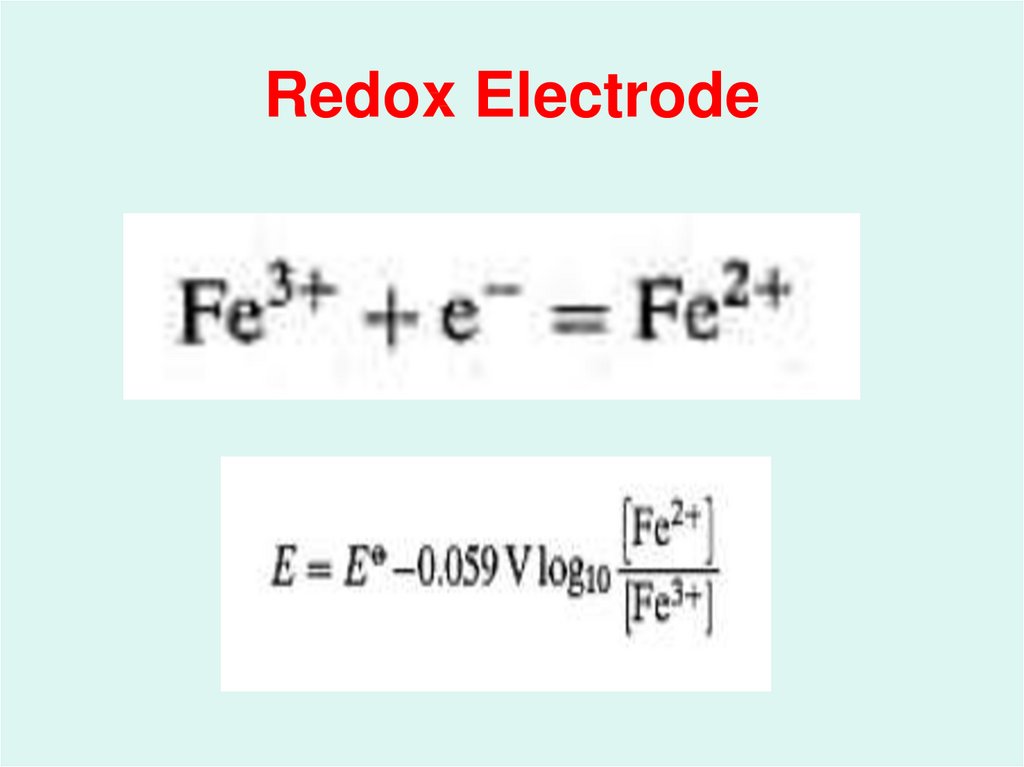






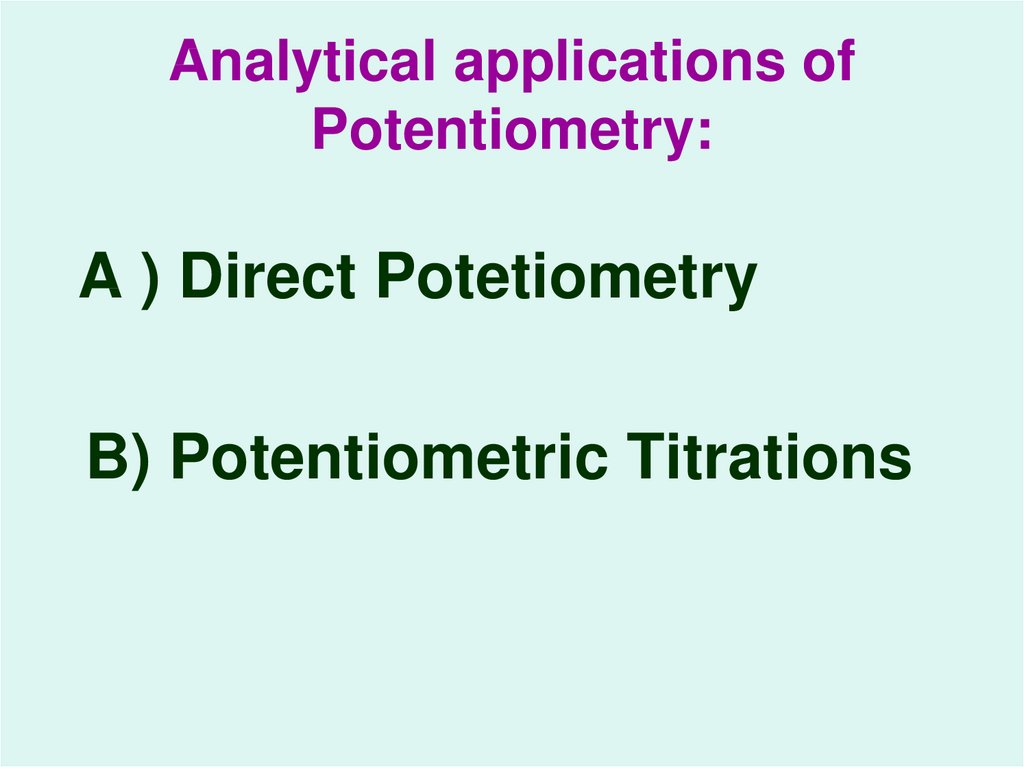


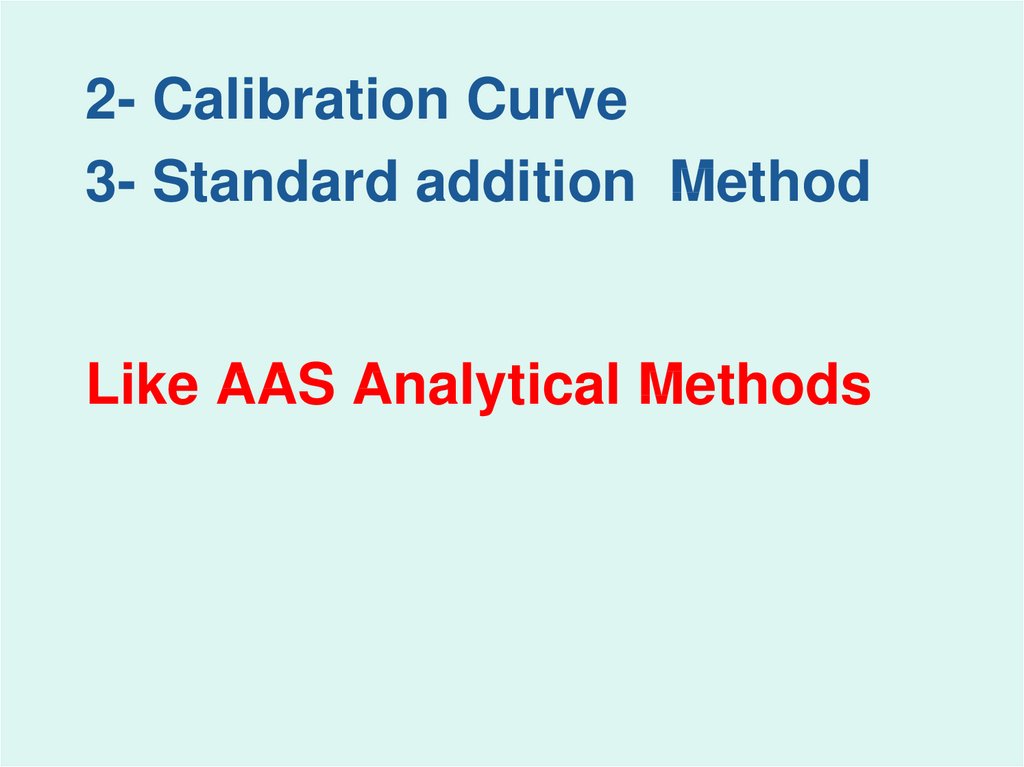







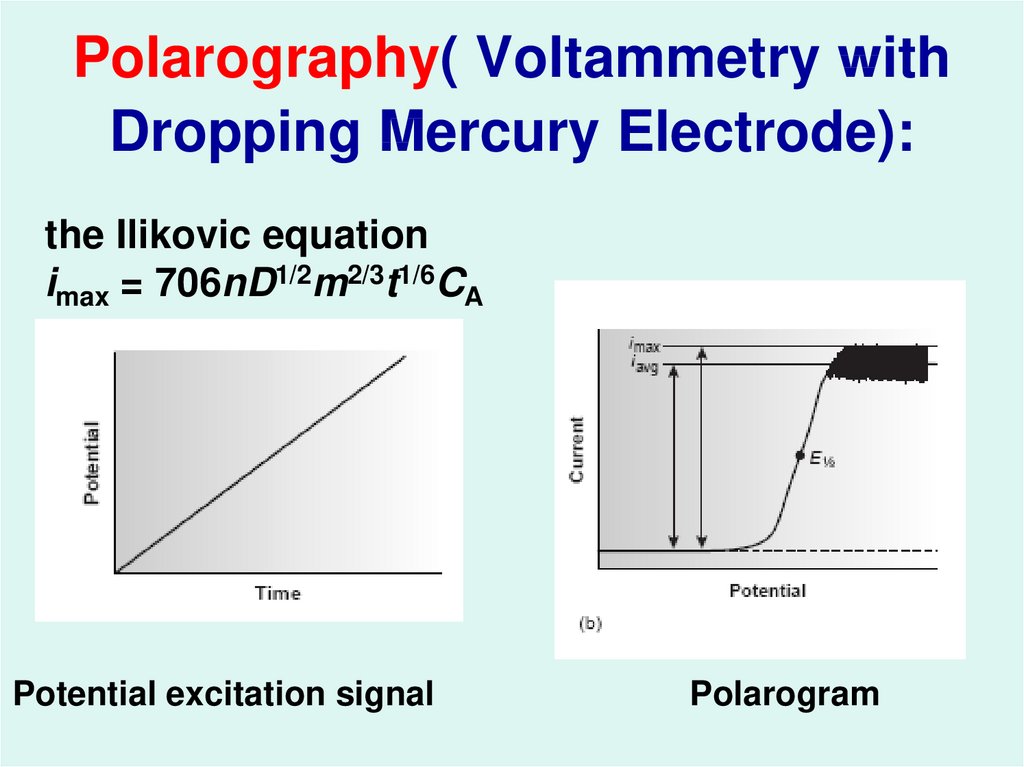




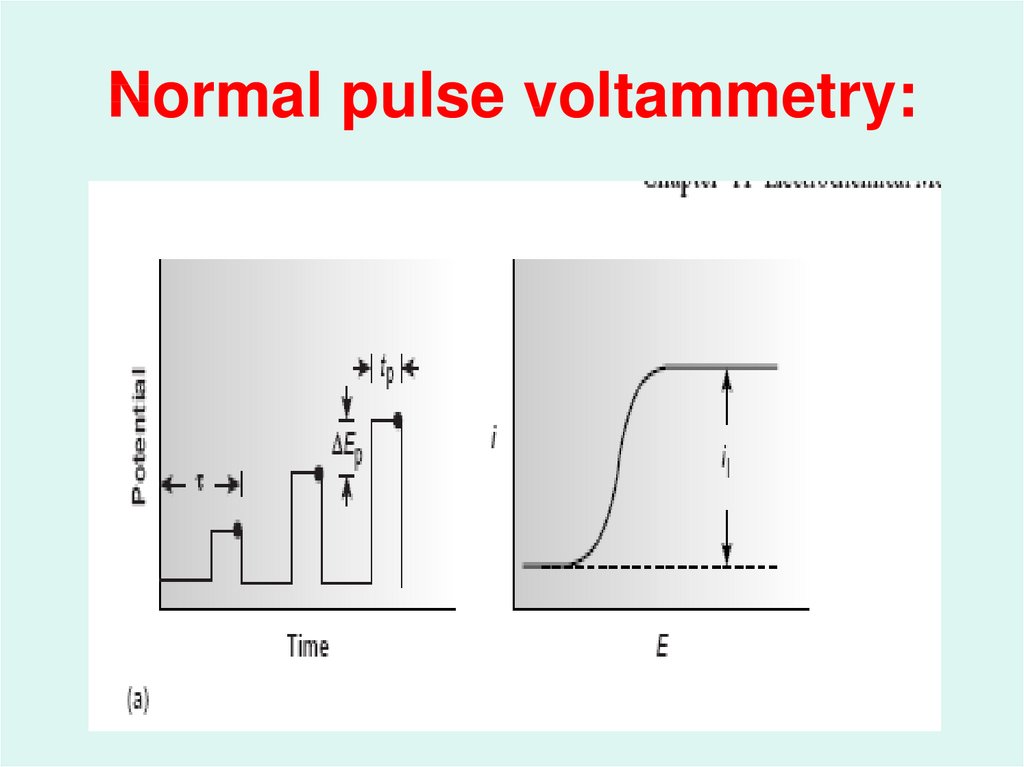



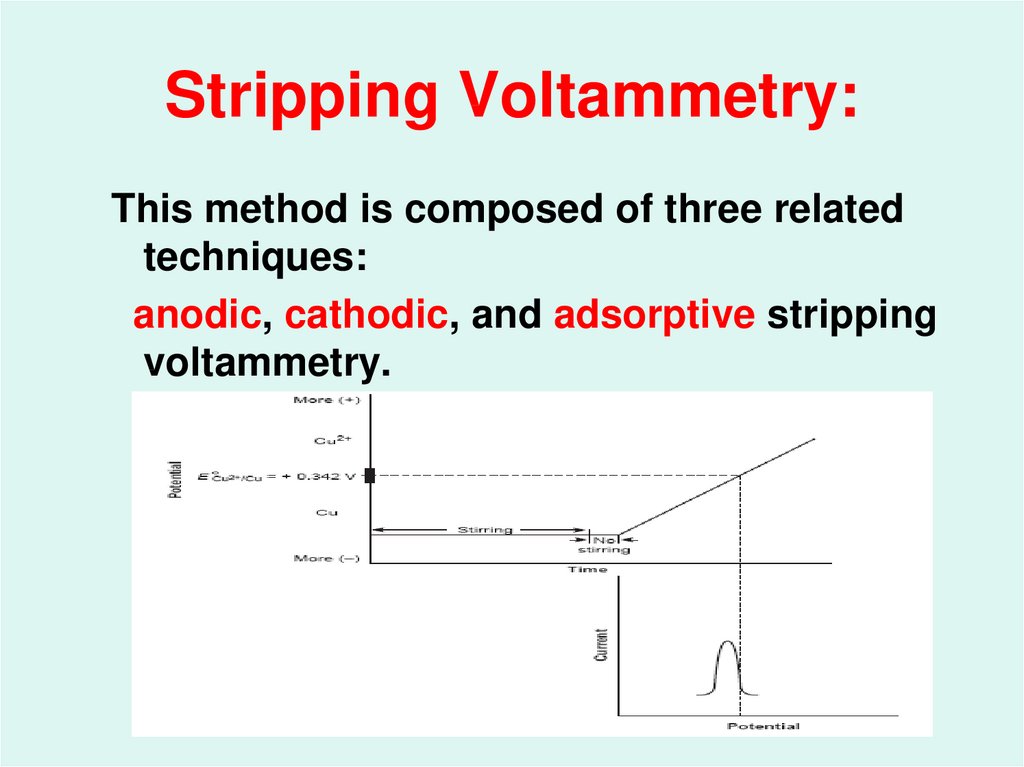


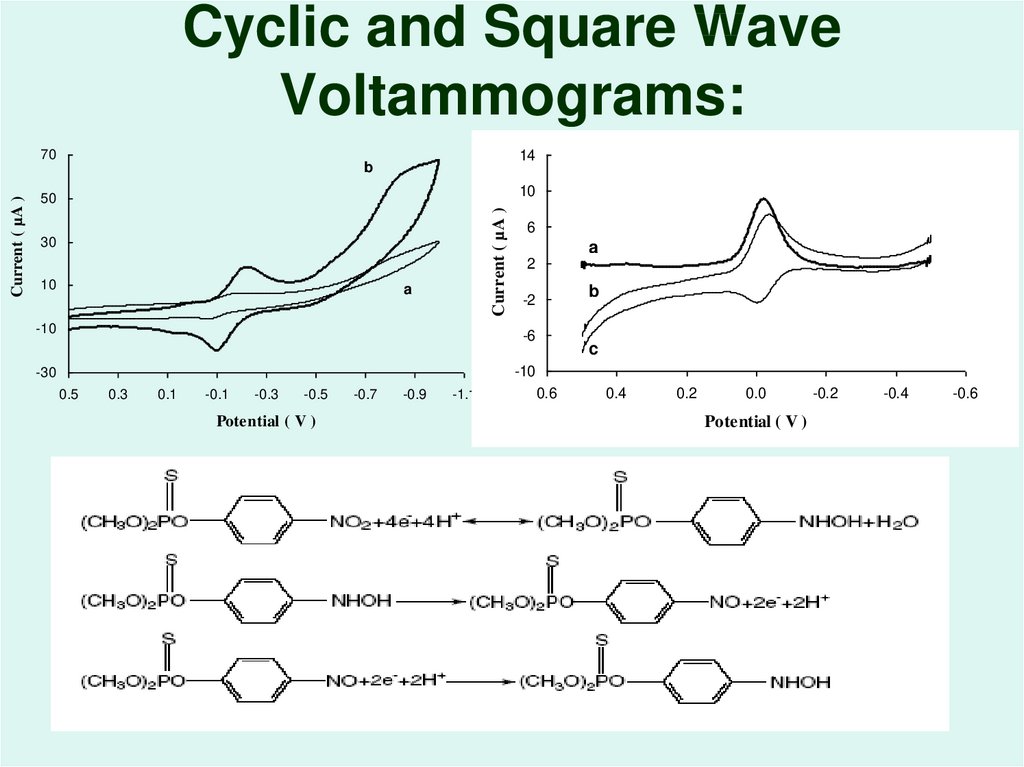


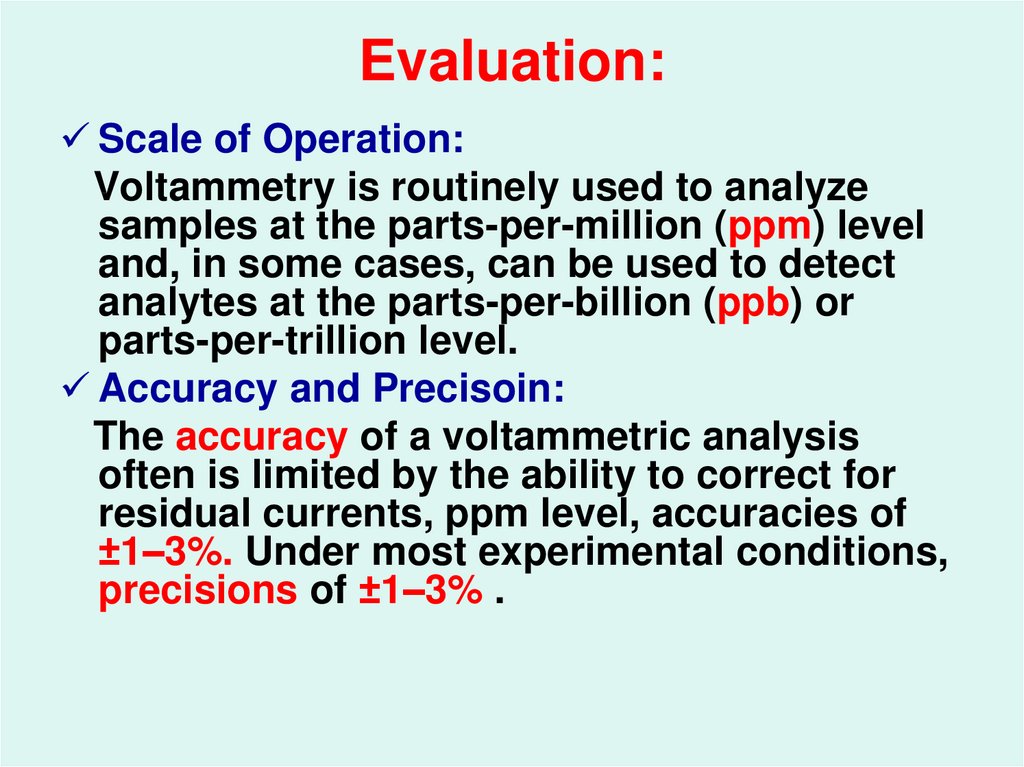


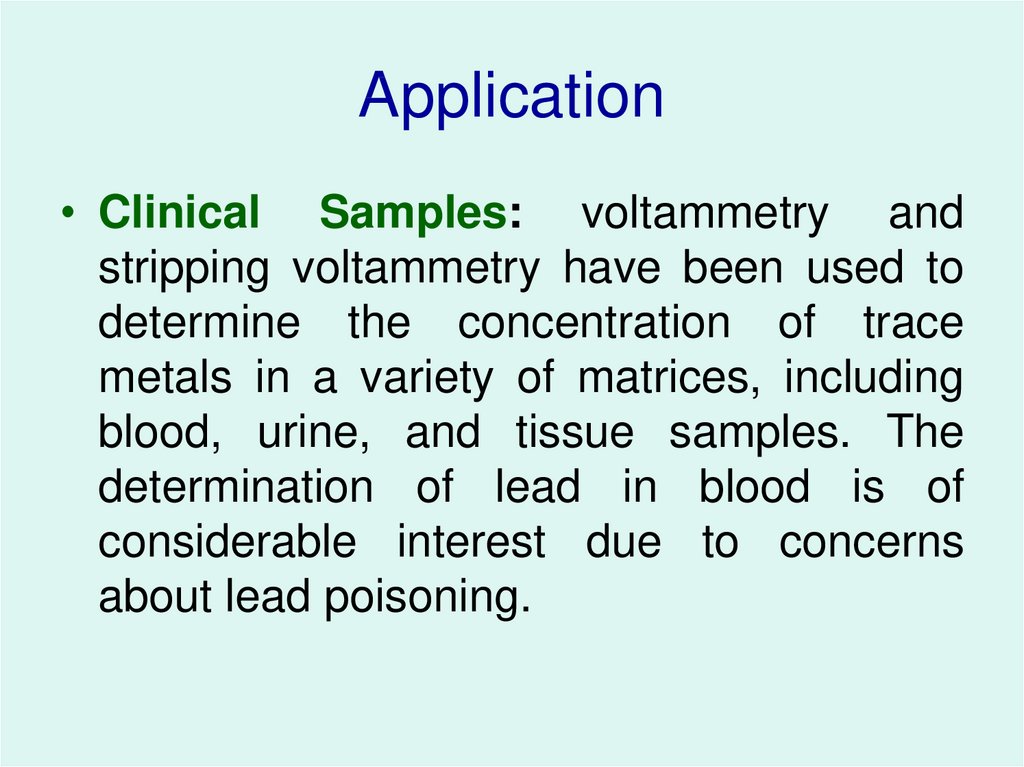


 Химия
Химия








